The cleaning of two whalebone arches at the School of Biomedical Sciences, University of Edinburgh
The large whalebone arch, 5.7 metres high.
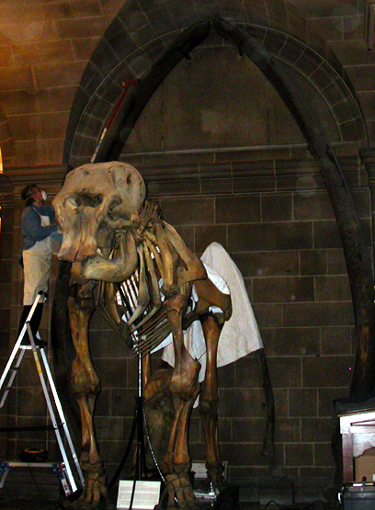 This extremely large whale bone arch consists of the lower mandible of Balaenoptera musculus,
a blue whale. It had not been cleaned for many years so was extremely dusty.
As a scaffolding tower could not be used,
the upper parts of the mandible arch could not be cleaned as effectively as the lower half.
The upper half was swept as thoroughly and as gently as possible with a broom on the end of a pole,
whilst a vacuum cleaner caught some of the dust.
The lower half was cleaned with more attention to detail, utilising a soft artists brush and vacuum
cleaner and much better results were obtained.
Many bristles from coarser brushes previously used to clean the specimen in the past were stuck in small cracks and crevices, along with the occasional feather from a feather duster.
This extremely large whale bone arch consists of the lower mandible of Balaenoptera musculus,
a blue whale. It had not been cleaned for many years so was extremely dusty.
As a scaffolding tower could not be used,
the upper parts of the mandible arch could not be cleaned as effectively as the lower half.
The upper half was swept as thoroughly and as gently as possible with a broom on the end of a pole,
whilst a vacuum cleaner caught some of the dust.
The lower half was cleaned with more attention to detail, utilising a soft artists brush and vacuum
cleaner and much better results were obtained.
Many bristles from coarser brushes previously used to clean the specimen in the past were stuck in small cracks and crevices, along with the occasional feather from a feather duster.
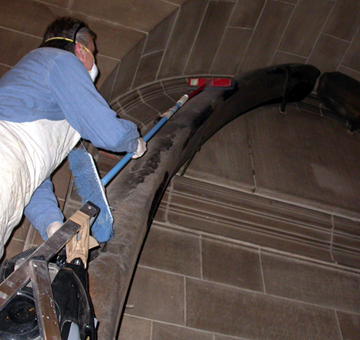
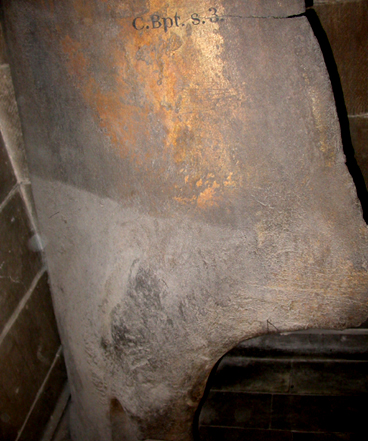

Far left, and left: Cleaning the upper half of the arch. The image in the middle shows a portion of the
mandible with the upper half cleaned and the lower half still dusty. The image on the rights show a small feather from
a feather duster stuck in a crack.
The smaller whalebone arch
This can be seen in the photograph on the top left of this page, under the dust sheet behind the elephant skeleton
(for information about the cleaning of the elephants, see:
www.natural-history-conservation.com/Edinburghelephants.htm)
This whalebone arch was only 2.7 metres high but was just as dusty.
These two whale bones were cleaned as above -
by brushing and vacuuming – along with some light swabbing with a conservation detergent.
Some repairs were required. A large area of the lowermost section of the mandible on the left had detached from the specimen some time ago and had been put behind it. This was adhered back into place after consolidation. It was noted that the inside of the specimen had been filled with wood and a sort of putty and filler that had warped and cracked so was very weak. Several large gaps were filled with plaster to try to stop pieces falling off again. The plaster was painted with artists acrylic paint.
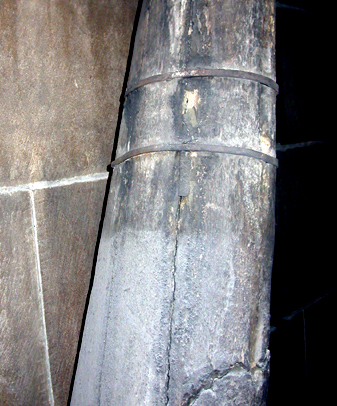
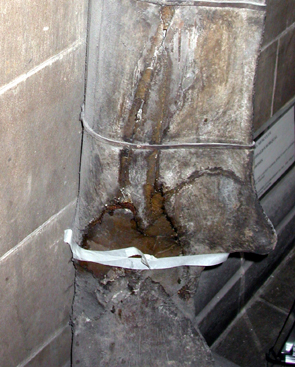
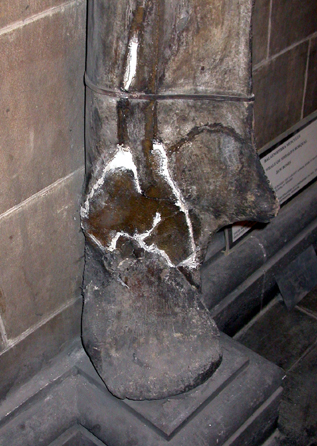
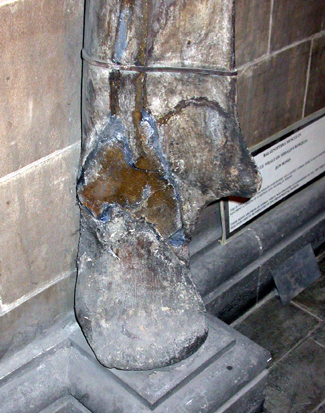
Far left: A section of the smaller whalebone arch: the top half has been cleaned, the lower half still has dust obscuring the surface. Left: gluing the displaced piece (held in place with masking tape whilst the glue sets). Right: plaster of paris inserted in to the very wide gaps, to help keep the vulnerable sections in place. Far right: the plaster of paris in the process of being painted out.
For more details about what we can do for you, or for a quote, please
contact:
enquiries@natural-history-conservation.com
We
are members of the United Kingdom Institute for Conservation of Historic and
Artistic Works